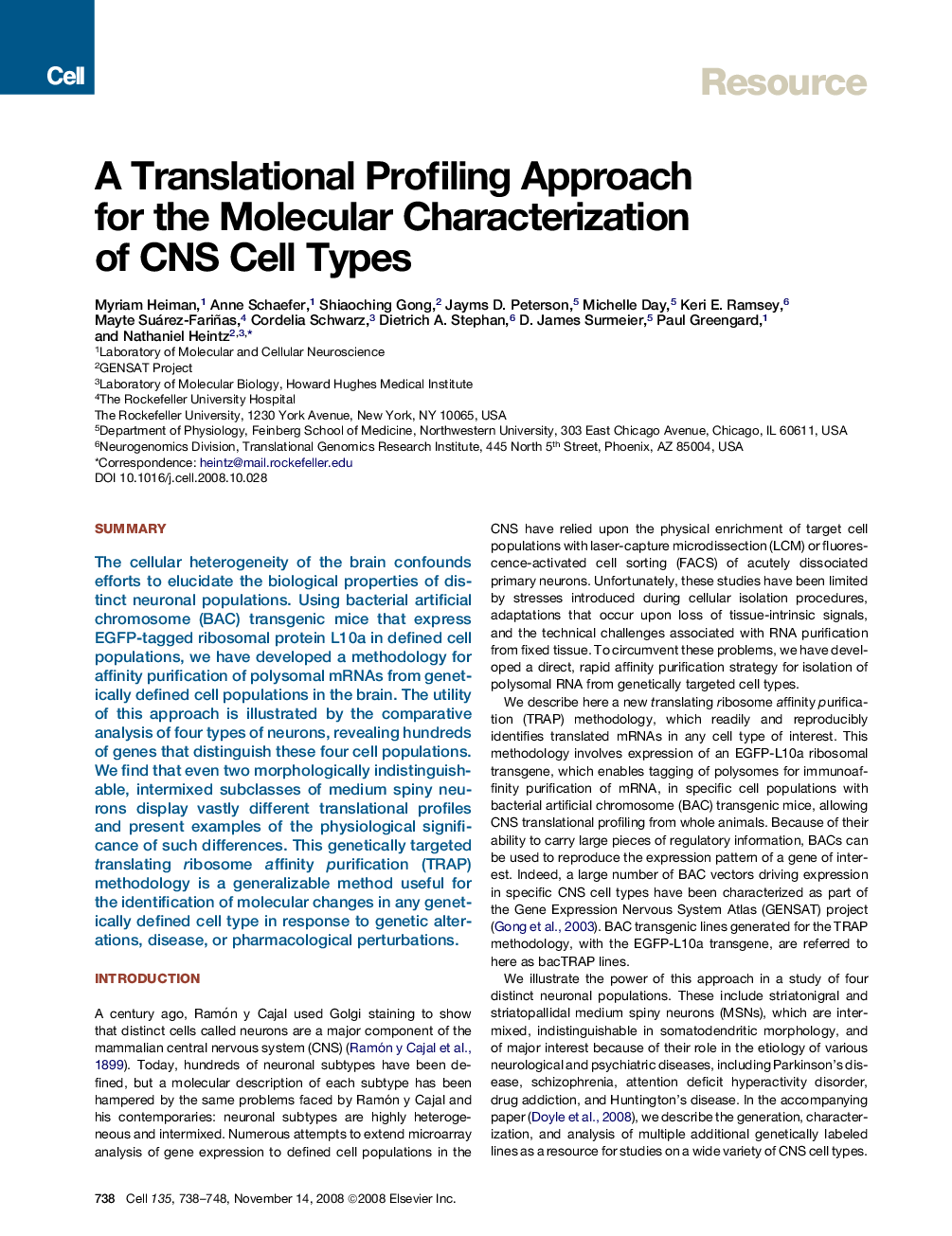| Article ID | Journal | Published Year | Pages | File Type |
|---|---|---|---|---|
| 2037200 | Cell | 2008 | 11 Pages |
SummaryThe cellular heterogeneity of the brain confounds efforts to elucidate the biological properties of distinct neuronal populations. Using bacterial artificial chromosome (BAC) transgenic mice that express EGFP-tagged ribosomal protein L10a in defined cell populations, we have developed a methodology for affinity purification of polysomal mRNAs from genetically defined cell populations in the brain. The utility of this approach is illustrated by the comparative analysis of four types of neurons, revealing hundreds of genes that distinguish these four cell populations. We find that even two morphologically indistinguishable, intermixed subclasses of medium spiny neurons display vastly different translational profiles and present examples of the physiological significance of such differences. This genetically targeted translating ribosome affinity purification (TRAP) methodology is a generalizable method useful for the identification of molecular changes in any genetically defined cell type in response to genetic alterations, disease, or pharmacological perturbations.
